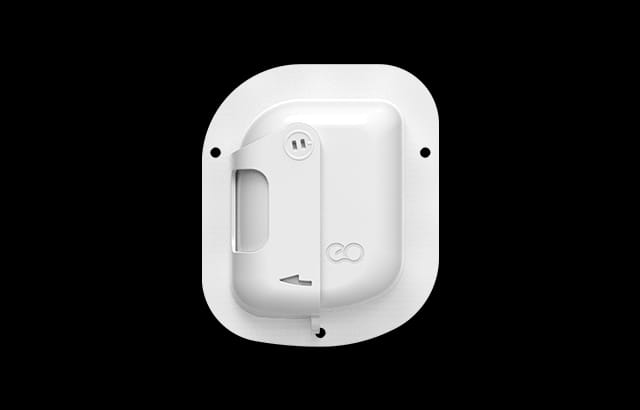Managing diabetes always means living by the clock. It requires lifelong self-care, which becomes a hectic responsibility for either the diabetic patient or the one taking care. It also means keeping a track of the consumed carbs, checking blood sugar levels time and again, hoping that they behave.
Moreover, the life of a diabetic patient becomes stressful as there is a constant need to keep up with a proper routine.
Poor sleep, lack of required nutrients in the diet, and an undisciplined routine can promote a monotonous way of living. If one is in the patient’s shoes, pricking needles to check for blood sugar levels can be quite painful. It causes emotional distress and may psychologically impact the patient’s health. Some patients also tend to avoid injecting insulin as they don’t want to deal with pricking needles. It increases the risk of complications and can be fatal in the long run.
To tackle all these problems and other potential risks, EOFlow welcomes you to the world of wearable insulin pumps.
Small, smart, and life-changing wearable devices that are changing the definition of managing diabetes, and this is the next big revolution.
Daily Injections Can Be Relentless & Here’s Your Freedom from It
According to the International Diabetes Federation (IDF), 11.1% of the adult population aged between 20-79 years is living with diabetes with 4/ 10 unaware of the possible condition.
This makes it approximately 589 million adults suffering from diabetes.
Now, given the amount of data, imagine the number of needles being pricked at every second in the world. The constant pain, trauma, and anxiety that the patient has to go through can now be reversed with the use of our wearable insulin pumps.
A revolutionary device, these insulin pumps can be attached to the patient’s skin. It is a small device that constantly delivers basal insulin, keeping blood sugar stable throughout the day.
This device can also be connected to the user’s phone. It can be controlled directly, as well as from the phone, and lets the user deliver a bolus dose before meals.
You, see? No tubes, no syringes, and no constant reminders that you are managing a chronic condition.
This is a breakthrough in the field of medicine and your freedom from the daily dose of injections.
Leaving a Massive Impact with Tiny Tech
As mentioned earlier, these wearable insulin pumps are a breakthrough in the field of medicine, and the heart of this innovation is precision.
Traditional injections, on the other hand, are powerful but rigid. There are proper fixed times to check for blood sugar levels, and based on the readings, lifestyle adjustments are made.
However, the human body does not work that way. Our hormones fluctuate now and then, activity levels may vary, meals differ, and stress can wreak havoc on blood sugar.
Wearable insulin pumps like EOPatch change the game by providing micro-doses of insulin every few minutes. These doses are tuned to meet the body’s needs and are completely customizable based on the basal rates for different times during the day, more insulin overnight, and any other factor that needs to be kept in check.
The control is yours, and the impact is massive. Now you don’t need to react to your blood sugar levels, you need to stay ahead of them. It is the perfect example of healthcare meeting SmartTech.
Blending In with New Age Technology
These wearable insulin pumps blend in with other technologies gracefully.
An insulin pump can be paired with a Continuous Glucose Monitor (CGM), a sensor that tracks glucose levels in real time.
How efficient would the tracking process be? That’s a powerful due forming a closed-loop-system, where the pump adjusts its insulin delivery based on the blood glucose level tracked by a CGM. This is also referred to as “artificial pancreas”.
In addition, a few advanced systems like EOPancreas or Omnipod 5 integrate AI algorithms to further predict where blood glucose levels are heading. This combination of technologies makes it even more efficient to adjust insulin doses proactively.
These results are convincing with fewer highs, fewer lows, and far less stress, empowering patients while simultaneously treating them.
Empowering Patients, Not Just Treating Them
The wearable insulin technology is not just a revolutionary modern-day treatment. It is also empowering where patients can now feel free and not controlled by the traditional method of controlling diabetes.
EOPatches flips the narrative by allowing the user to take charge and adjust doses based on activity and experiment with other factors such as exercise and diet.
It also provides patients a bandwidth to understand their bodies on a deeper level through data insights.
It becomes a two-way process where not only the patients but, the healthcare providers too, get to avail the benefit from it.
With insights, real-time data sharing, and predictions, doctors can also make informed decisions and tweak insulin delivery plans even more accurately.
Diabetes, which once made a person weak, can now be lived with more courage and awareness.
EOPatches does more than what medicine does, it improves the quality of life greatly.
Wearable Insulin Pumps: Improving Quality of Life Everyday
Along with the medical outcomes, the emotional impact is perhaps even greater.
With EOFlow’s EOPatch, patients can now plan their activities in advance, without the constant anxiety to make last-minute decisions. Be it a student, a teenager, an athlete, an old man or, a woman, these wearable insulin patches are powerful and empowering.
Beyond personal stories, clinical research has consistently shown the benefits of insulin pump therapy.
Studies reveal that users of continuous insulin delivery systems have:
- Lower HbA1c levels, indicating better long-term glucose control
- Fewer episodes of hypoglycemia(dangerously low blood sugar)
- Increased time-in-range (TIR)— the percentage of time glucose levels stay within a healthy target
Over time, these improvements lead to fewer diabetes-related complications, protecting the heart, kidneys, nerves, and eyes.
And because EOPatches are now more affordable and widely available, access is growing across regions and age groups.
The Future of Diabetes Care
The next chapter of this story is even more exciting.
With ongoing advancements in AI, sensor miniaturization, and wearable design, the diabetes care ecosystem is heading toward complete automation.
Imagine a future where:
- Your smartwatch predicts glucose spikes and communicates directly with your insulin pump.
- AI algorithms personalize your insulin needs based on stress, sleep, or activity data.
- The entire system operates quietly in the background, like an invisible pancreas, always learning and adapting.
EOFlow (makers of the EOPatch), are already leading this charge, developing next-generation devices that are smaller, smarter, and longer-lasting. The goal? A world where diabetes care is effortless, personalized, and empowering.
References
- American Diabetes Association (ADA).“Insulin Pumps.” org.
https://diabetes.org/health-wellness/insulin-pumps - Centers for Disease Control and Prevention (CDC).“Using Insulin Pumps to Manage Diabetes.” CDC Diabetes Care.
https://www.cdc.gov/diabetes/managing/insulin-pumps.html - Eoflow Co., Ltd.“EOPatch: Tubeless Wearable Insulin Delivery System.” Eoflow Official Website.
https://www.eoflow.com/en/eopatch - Insulet Corporation.“Omnipod® Insulin Management System.” Omnipod Official Website.
https://www.omnipod.com - Bergenstal, R. M., et al.(2016). Safety of a hybrid closed-loop insulin delivery system in patients with type 1 diabetes.
New England Journal of Medicine, 375(7), 689–691.
https://doi.org/10.1056/NEJMc1607592 - Pickup, J. C., & Sutton, A. J.(2008). Severe hypoglycemia and glycemic control in Type 1 diabetes: Meta-analysis of multiple daily insulin injections compared with continuous subcutaneous insulin infusion.
Diabetic Medicine, 25(7), 765–774.
https://doi.org/10.1111/j.1464-5491.2008.02486.x - Ly, T. T., et al.(2013). Effect of sensor-augmented insulin pump therapy and automated insulin suspension vs standard insulin pump therapy on hypoglycemia in patients with type 1 diabetes.
JAMA, 310(12), 1240–1247.
https://doi.org/10.1001/jama.2013.277818 - Weisman, A., Bai, J. W., Cardinez, M., & Perkins, B. A.(2017). Effect of artificial pancreas systems on glycaemic control in patients with Type 1 diabetes: A systematic review and meta-analysis.
The Lancet Diabetes & Endocrinology, 5(9), 658–668.
https://doi.org/10.1016/S2213-8587(17)30167-5 - Medtronic Diabetes.“MiniMed™ Insulin Pumps.” Medtronic Official Website.
https://www.medtronicdiabetes.com - World Health Organization (WHO).“Diabetes.” WHO Fact Sheet (2023).
https://www.who.int/news-room/fact-sheets/detail/diabetes





























